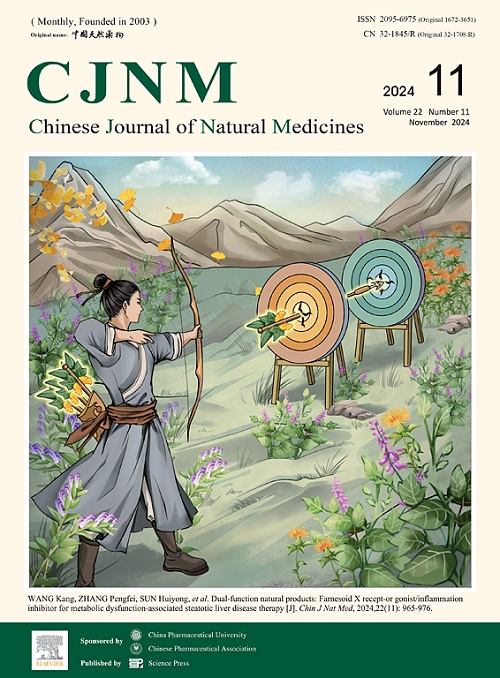Combining label-free quantitative proteomics and 2D-DIGE to identify the potential targets of Sini Decoction acting on myocardial infarction
IF 4.9
2区 医学
Q1 INTEGRATIVE & COMPLEMENTARY MEDICINE
引用次数: 0
Abstract
Sini Decoction (SNT) is a traditional formula recognized for its efficacy in warming the spleen and stomach and dispersing cold. However, elucidating the mechanism of action of SNT remains challenging due to its complex multiple components. This study utilized a synergistic approach combining two-dimensional fluorescence difference in gel electrophoresis (2D-DIGE)-based drug affinity responsive target stability (DARTS) with label-free quantitative proteomics techniques to identify the direct and indirect protein targets of SNT in myocardial infarction. The analysis identified 590 proteins, with 30 proteins showing significant upregulation and 51 proteins showing downregulation when comparing the SNT group with the model group. Through the integration of 2D-DIGE DARTS with proteomics data and pharmacological assessments, the findings indicate that protein disulfide-isomerase A3 (PDIA3) may serve as a potential protein target through which SNT provides protective effects on myocardial cells during myocardial infarction.
结合无标记定量蛋白质组学和2D-DIGE鉴定四逆汤对心肌梗死的潜在作用靶点
四逆汤(SNT)是公认的温脾胃散寒的传统方剂。然而,由于SNT的成分复杂,阐明其作用机制仍然具有挑战性。本研究采用基于二维荧光凝胶电泳差异(2D-DIGE)的药物亲和反应靶稳定性(DARTS)与无标记定量蛋白质组学技术相结合的协同方法,鉴定了SNT在心肌梗死中的直接和间接蛋白靶点。分析发现590个蛋白,与模型组相比,SNT组有30个蛋白显著上调,51个蛋白下调。通过将2D-DIGE DARTS与蛋白质组学数据和药理学评估相结合,研究结果表明,蛋白二硫异构酶A3 (PDIA3)可能是心肌梗死期间SNT对心肌细胞提供保护作用的潜在蛋白靶点。
本文章由计算机程序翻译,如有差异,请以英文原文为准。
求助全文
约1分钟内获得全文
求助全文
来源期刊

Chinese Journal of Natural Medicines
INTEGRATIVE & COMPLEMENTARY MEDICINE-PHARMACOLOGY & PHARMACY
CiteScore
7.50
自引率
4.30%
发文量
2235
期刊介绍:
The Chinese Journal of Natural Medicines (CJNM), founded and sponsored in May 2003 by China Pharmaceutical University and the Chinese Pharmaceutical Association, is devoted to communication among pharmaceutical and medical scientists interested in the advancement of Traditional Chinese Medicines (TCM). CJNM publishes articles relating to a broad spectrum of bioactive natural products, leading compounds and medicines derived from Traditional Chinese Medicines (TCM).
Topics covered by the journal are: Resources of Traditional Chinese Medicines; Interaction and complexity of prescription; Natural Products Chemistry (including structure modification, semi-and total synthesis, bio-transformation); Pharmacology of natural products and prescription (including pharmacokinetics and toxicology); Pharmaceutics and Analytical Methods of natural products.
 求助内容:
求助内容: 应助结果提醒方式:
应助结果提醒方式:


